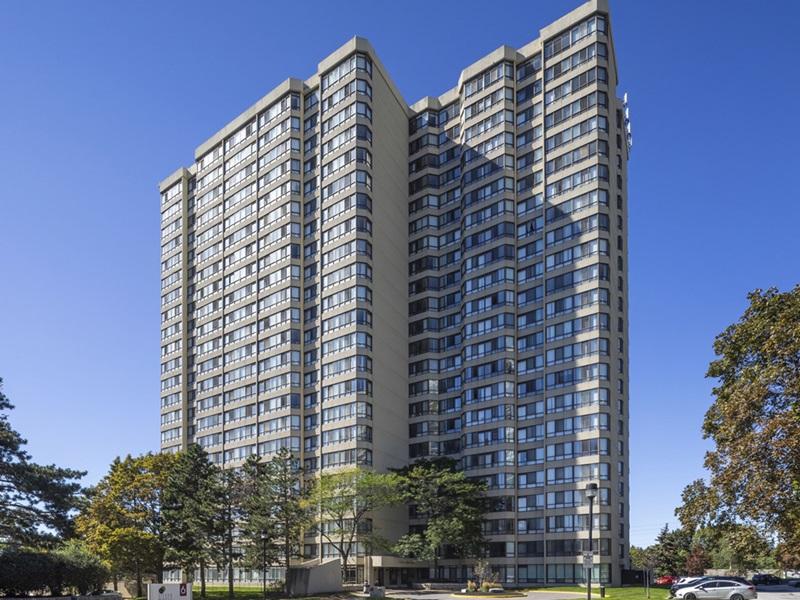
In Boston, 125 Summer was repurposed into a successful boutique office complex. (Courtesy Stantec)
GUEST COLUMN: Commercial real estate in our downtowns is going to look very different in the coming years.
The COVID-19 pandemic has accelerated trends like the adoption of digital business solutions and work-from-home policies, leading many companies to experiment with reducing their physical footprint as their leases come up for renewal.
This doesn’t bode well for the industry or our cities. Toronto’s office vacancy rate was 11 per cent in Q4 2020. Hard-hit Calgary and Edmonton were at 27 per cent and 26 per cent in Q4, respectively (according to CBRE’s Q4 2020 reports).
This has an enormous effect on business, community prosperity and municipal revenues. In the U.S., the National League of Cities recently estimated U.S. cities could face a $90-billion shortfall this year because of commercial real estate decline.
I believe our downtowns will bounce back — and in some places they already are. They are the heart of a region’s economy, culture and innovation; that’s not going to change. But, they will have to adapt to new market forces and people’s preferences.
When we talk about downtown commercial real estate, the stakes are high. While downtowns average just one to three per cent of city land, they account for 10-30 per cent of tax revenue.
The good news is we can start building a roadmap to get ahead of the problem. Planning tools at our disposal can disentangle rules, policies and overlays, while quickly repurposing and refinancing buildings for different uses.
Doing so will create greater business certainty, leading to business investment and long-term prosperity for municipal coffers.
First, an honest assessment of CRE
There’s no point in mincing words, we are in crisis mode. There are more questions than answers out there when it comes to dealing with fallout from the COVID-19 pandemic. I do, however, clearly see an accelerated flight to quality office space.
The flight to quality is exactly what it sounds like — companies making the move to newer and nicer offices. Choosing to upgrade office space is appealing on several levels: location, amenities, efficiency, prestige. Making that upgrade will be cheaper than any year in recent memory.
While there isn’t an exact standard to classify office space, there are three classes that are generally used. Class-A space includes the most modern facilities with higher ceilings, efficient large floor plates, more elevators, modern HVAC systems and often a LEED certification – all more desirable post-COVID.
Class-B and class-C are older and sometimes difficult to retrofit into a true class-A space.
As companies look to reduce their footprint, resulting in more affordable class-A spaces, B and C spaces are unlikely to come back to widespread office use. In the post-pandemic world, high-quality HVAC systems and more space will simply be more desirable.
This leads to a need (and an opportunity) to change how we think of those lower classes of real estate and to reposition them for new uses. Retrofitting an underutilized building – even if it’s basically just the shell – will often be 50 per cent less costly than a new build, not to mention more environmentally friendly.
Future success lies in filling new needs
So, what are the needs of the post-COVID economy and how can we position all classes of office space for the future? Without claiming to have a crystal ball, some preferences and policies are emerging that we can get in front of now:
– Increased desire for flexible spaces. Co-working spaces, technological advancements and remote work have pushed us forward in terms of how we think about office space. Creating more space that caters to less traditional office space requires increased flexibility to maximize both efficiency and comfort.
– Experience-first thinking. We need to ask questions like: “How are we making coming to the office better than staying at home?”
– More space for people. This applies both inside and outside of buildings. For the foreseeable future, it is important to offer options for social distancing that comply with public health guidelines and pandemic safety protocols. As many jurisdictions have endured long lockdowns, we’ve renewed our love for green urban spaces and a public realm that puts people first.
– Pedestrian, parklet and patio experiences. These three Ps will draw people to our downtowns and contribute to an economic development strategy. Commercial real estate form and use have a direct relationship with creating an inviting district, which can be explored creatively with business improvement districts (BIDs).
– Finally addressing our housing gaps. Many cities in North America are facing a housing crisis due to affordability and availability. Plenty of B- and C-class commercial real estate is well-suited to affordable housing, senior complexes and student residences.
– Inviting in new uses. More affordability in B- and C-class real estate means we could see some unexpected uses for former office buildings. For example, some Boston office space is now being converted to laboratory space. Logistics and distribution centres and ghost kitchens are other uses that have boomed during the pandemic.
Thinking creatively, we can transform our commercial spaces into new and exciting buildings that add value to the community. If done right, building owners can get more value out of their properties and the results can be revolutionary for entire districts.
But, we need to create the conditions for that innovation.
A roadmap for repositioning downtown office space
Every city and BID will have different goals, and every building will have a different best option for retrofitting. There is no one-size-fits-all plan for something as complex as rethinking large commercial assets and how they might fit into a larger plan to reshape a community.
That said, there are several tools at a city’s disposal:
– Malleable zoning: Ensure downtown land-use zones allow for adaptability and flexibility of use, form, signage, encroachment (patios and podiums), and reduced parking requirements to maximize places for people. Couple this with pedestrian-only zones to open streets to people and people-centred programming and converting street parking to allow outdoor dining/cafés. Upzoning can allow for greater density, density bonusing and/or accessory dwelling units (ADUs) to help alleviate affordability issues stemming from lack of inventory.
– Think differently about historical preservation: Historical preservation is important, but we don’t want preservation bylaws to stymie using historic buildings for the present. A tax credit can help spur investment and give old buildings new life.
– Abolish parking minimums: Many cities are removing parking minimums to make new projects or redevelopments more affordable and to let the market decide how much parking needs to be provided. This allows former parking spaces in buildings (e.g., class-B and -C) to be converted to gyms, food production, storage and labs.
– Local improvement levies: Local governments can borrow money for improvements and have that debt paid back via a levy on the benefitting area.
– Apply for higher order grant funding: Federal infrastructure funding is just starting to flow for the COVID recovery and there are grant opportunities to explore. In the U.S. for example, Stantec’s North American Funding Team has helped clients secure over US$4 billion for projects ranging from environmental assessments to transit-oriented development planning.
– Develop housing grants: Provide financial incentives such as grant money per each unit of new housing in markets with weaker real estate economics. Increasing the downtown population has a cascading impact as it generates economic multipliers by creating vibrancy, filling restaurants outside of office hours and creating safer streets.
– Tax abatements: Multiyear tax abatements are an incentive to make improvements financially viable while improving the cityscape over the long term.
– Public-realm improvements: Investing in public realm improvements (parks, plazas, street trees, benches, pedestrian-oriented streetlights, cobblestone/pavers, mid-block crossings and bulb outs) and urban design improvements of the first 30 feet of building facades helps spur private investment in the building itself.
– Expedite permitting and inspections: Encouraging LEED certification, green roofs and green infrastructure, and other desirable qualities can push development along. Temporarily relaxing bylaw standards can also help expedite construction (thus reducing costs).
Disentangling policies and regulations will position us to fast-track the conversion of class-B and -C office space to alternative uses, repositioning these assets for future needs.
The first step is mapping out the needs of the community and initiating collaboration between the city, building owners and BIDs. Building the right roadmap to carry on into the future requires getting the right people at the table and setting some common goals.
As vaccines are rolled out and we see the light at the end of the tunnel, we are poised for an aggressive economic recovery for the next several years. By leveraging the right tools, we can supercharge that economic recovery for our commercial real estate sector and reshape our communities for the better.











